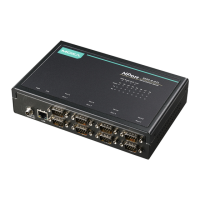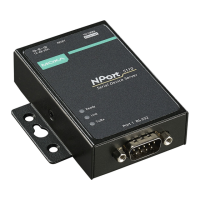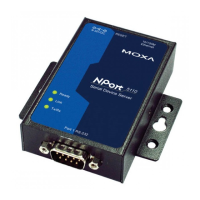NPort 5600-8-DT/DTL Series Introduction to Operation Modes
UDP Mode
UDP is similar to TCP but is faster
and more efficient. Data can
be broadcast to or received from multiple network hosts.
However, UDP does not support verification of data and would
not be suitable for applications where data integrity is critical.
It is ideal for message display applicati
ons.
Pair Connection Modes
Pair Connection Master and Slave modes connect two NPort
device servers over Ethernet for serial
-to-serial
communication. The two NPort device servers can connect to
each other with a Ethernet cable, connect to the same LAN, or
in a more advanced setup, communicate to each other over a
WAN (i.e., through one or more routers). A device attached to
one NPort can then communicate transparently to a device
attached to the other NPort, as if the two devices were
connected by a seri
al cable. Both data and modem control
signals are exchanged, except for DCD signals. This can be
used to overcome traditional limitations with serial
communication distance and introduces many new possibilities
for serial
-based device control.
Reverse Telnet Mode
In Reverse Telnet mode, the device port is connected to a
server and waits for a terminal session to from a host on the
network. This is an appropriate mode for console management,
with device ports connected to the console/AUX or COM ports
of r
outers, switches, or UPS units. Unlike TCP Server mode,
Reverse Telnet mode assists with CR/LF conversion.
Disabled Mode
A device port can be disabled by selecting the Disabled operation mode.

